The 99th Tour de France is well underway, and despite being the most revered and well known bike race in the world, it's a complete mystery to most.
Which is a shame. It's an inspiring event with a rowdy history, and a great excuse to watch Europeans chase cyclists around the French countryside. No other sports event of such prestige is as chaotic as Le Tour.
While the official Tour rulebook is 40 pages long, we've got all you need to get started in one simple page. Read on.
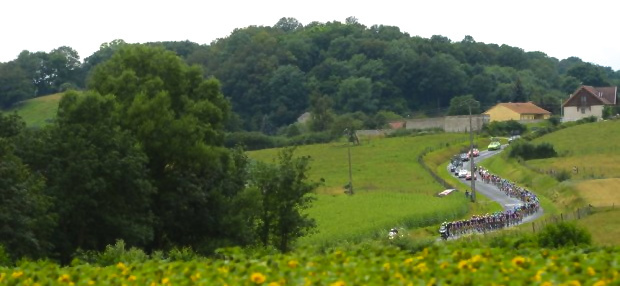
Le Tour:
The scope of the race is consistent but the specific towns on the course vary each year. This year's Tour covers over 2,000 miles, with only 2 days of rest. The riders will average 103 miles per day for 3 weeks straight.
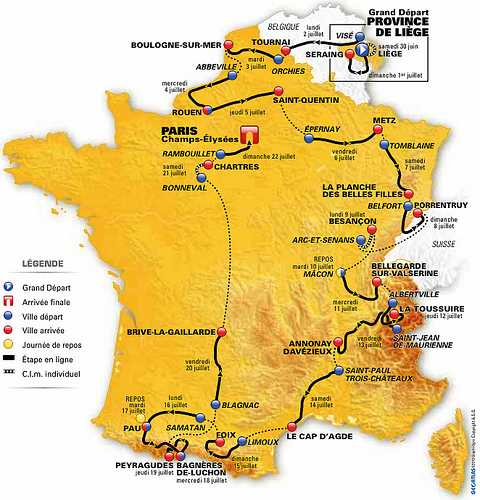
What You'll See:
Each segment of the race is called a stage, and with only a few exceptions, each stage is a mass-start, which is exactly what it sounds like. All riders begin together in a large group called a peloton and race to the finish line. In the process there will be numerous breakaways, where one or more riders will speed away from the peloton. More often than not, the breakaway won't be able to sustain the increased speed and will be reabsorbed by the group.
The peloton is followed by a swarm of photographers on scooters and team support cars carrying coaches, mechanics and parts. If a rider gets a flat tire or crashes, the support car will zoom up and deliver a new wheel or bike. Occasionally the scooters will crash into riders, spectators or each other.
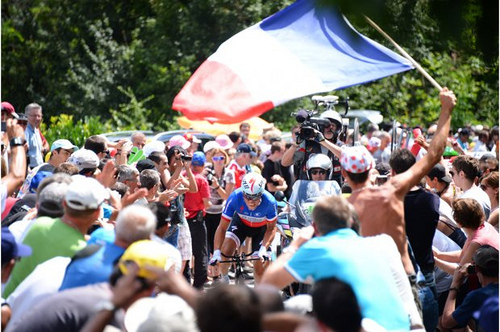
The course, which is simply the streets of France, is full of spectators. Fans are only restricted in certain areas on crowded city streets. In the countryside they park RVs in wheat fields, dress up in costumes and run down the road with their favorite riders. It's a well learned dance at this point.
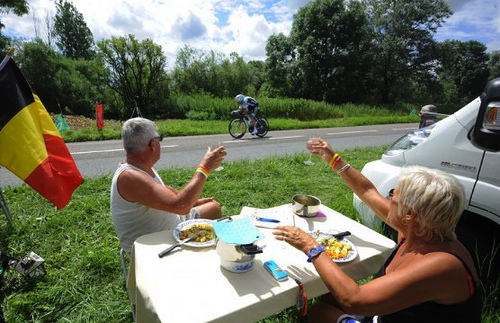
Many sports fans love to believe in the mirage of the plucky young athlete, with his heart of gold and endless determination, who defeats his opponents to a chorus of praise. Well, that ain't how life works. And it certainly isn't how the Tour works. To win, you need domestiques.
Domestiques do their job by setting the pace, blocking other riders, delivering food and water to the front, creating a slipstream, even giving up their bikes in the event of a crash or malfunction. This year's tour began with 198 riders on 22 teams, but only a handful have a shot to win. The rest are there to make sure it's their teammate on the podium. It's an essential and respected position, and those who do it well may have their own domestiques in future races.
How To Win:
The overall winner is the rider whose cumulative time, on all stages, is the fastest. In addition, there are special jerseys worn by the fastest riders in four categories.

Yellow Jersey: Worn by the rider with the fastest cumulative time. The yellow jersey, or maillot jaune, is the ultimate goal. Putting it on after a stage victory means a cash prize of €8,000 and two French kisses. Putting it on as the victor in Paris means adulation and €450,000. Not bad for a ride through Champagne vineyards.
Green: Awarded to the leader in the points classification. Points are accrued through finishing placement and stage sprints. Pays €25,000.
Red Polka Dots: Points are awarded to the fastest climber, known as King of the Mountain. The harder the climb, the more points. Pays €25,000.
White: Worn by the rider with the highest overall standing under 25 years of age. Pays €20,000.
History and Tradition:
1903: The Tour was the creation of a struggling Parisian sports newspaper, L'Auto, as a device to invigorate sales. Long-distance races were already popular and this one was designed to be a spectacle.
Well it was, and it worked. Most of the riders that first year were disqualified, including the winner, while fans rushed into the streets to beat up rival riders. Circulation of L'Auto ballooned and their competitor went out of business the following year.
The early decades were a mess. Riders rode single speed bikes, with wooden rims, and stages often started in the middle of the night. Cheating was rampant with riders hoping cars and trains to elide long routes. In various years the race organizers tried, but failed, to mandate that all riders eat the same amount of food and ride the same bike.
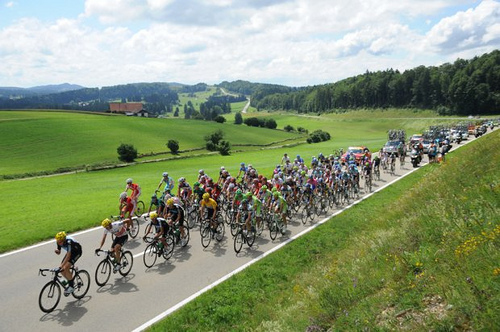
While time has refined the race it is never without drama. In 1989, American Greg Lemond won the Tour by only 8 seconds with shotgun pellets lodged in his heart. In 1999, protesting firemen halted the racers and pelted them with stinkbombs.
Tradition dictates a surprising level of good sportsmanship. If the yellow jersey rider has a mechanical problem, the race leaders will slow down to wait for him. If a rider has to pee, he'll just go. On the bike. If it's during an ascent it's not uncommon for a teammate to push him.
The race closes with laps around the Champs-Élysées, one of Paris' most glamorous streets. This Tour tradition since 1975 rarely affects the standings but is a prestigious way to close cyclings most revered event.
How To Watch:
If you have cable, NBC Sports Network is broadcasting nearly 300 hours of coverage. Listings can be found here. On the web, video highlights can be found for free after every stage from the Tour's site here. Serious fans can pay to stream it live as well.
NBC will air a two hour recap of the entire Tour at 1:00 pm Eastern on Sunday, July 22nd.
All images courtesy of the Tour de France.

Read more »